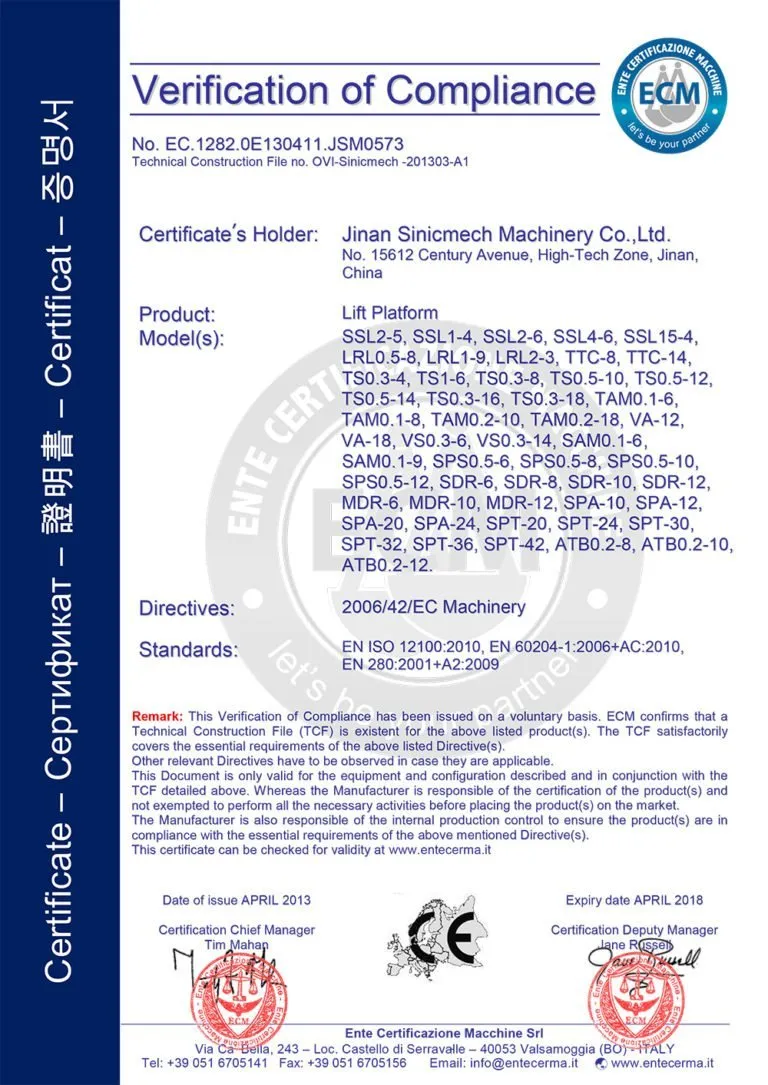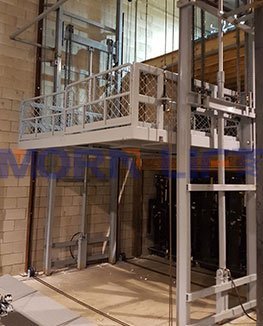The purchasers or operators of scissor lifts are likely to pay more attention to the machines’ working
 performance and efficiency than their safety guidelines. This could be the greatest one among various potential risks during scissor lifts application. As some accidents and injuries can be avoided efficiently by some preventive measures and sufficient preparatory work. Security is greater than everything. Such simple formula is easy to speak, but hard to implement in practical scissor lifts operation.
performance and efficiency than their safety guidelines. This could be the greatest one among various potential risks during scissor lifts application. As some accidents and injuries can be avoided efficiently by some preventive measures and sufficient preparatory work. Security is greater than everything. Such simple formula is easy to speak, but hard to implement in practical scissor lifts operation.
It may occur to people that more time will be spent than what is expected if they strictly adhere to safety procedures and guidelines. Actually, the risks will be reduced markedly when operators bears in mind that safety guidelines are the first prior thing in all jobs. If so, accidents and injuries caused by unsafe operations can be decreased, from which the work time of each job is accordingly reduced. Besides, a lower rate of lawsuits will happen if workers and operators heed safety guidelines.
Sorrowful facts have demonstrated that unsafe operation on scissor lifts did lead to great loss of lives. Colleges used to apply scissor lifts to shoot videos or aerial views in football matches or some other ceremonial events. But they now reduce the use of scissor lifts to prevent accidents, because the person holing the camera might be blown over by a sudden gust of wind or even a by a fallen leaf. In this way, safety guidelines are particularly significant.
So here 5 safety guidelines on operating scissor lifts are outlined to guide you on your way.
1. Do not overload at any time
Although scissor lifts belong to heavy machinery, they cannot hold too heavy goods or people far more beyond their bearing limits. There are some circumstances in which people need to reduce work time or for other reasons, then they will lift too many people or things once. Overloads will shake the stability of scissor legs used to support the platform. Thus chances are that the scissor legs will shaking or even broken. You can imagine what accidents it will result in.
2. Do not rush to transfer materials
Haste makes waste. When you work via a scissor lift in a rush, you will regret that later. Too rush, too dangerous. Operating a scissor lift is never a game which can be replayed again and again. Every procedure should be complemented in an orderly way to completely guarantee the safety. And Special caution should be paid when using scissor lifts and when processing complicated jobs.
3. Use lanyards to double ensure safety
Lanyards are ropes attached to an operator’s wrist as an aided safety option. When he encounters unexpected or life-threatening problems, the wrist will enable the lanyards to pull the “kill switch” which is also attached to the lanyard, and then the scissor lift will stop operating. However, please remember 2 things – place the lanyards in the right place and do not get them intertwined. Otherwise, your safety will be discounted.
4. Stay inside the guard rails
Sometimes operators or workers standing on the scissor lift platform need to reach out over the platform to conduct special tasks. But one should remember do not to extend himself beyond the guard rails, or he will lose balance and fall down from the platform. Also please avoid standing on the guard rails.
5. Do not move the extended platform to other places
When you want to move the scissor lift to other workplaces, please firstly check whether the platform has been brought back or not. Only when the platform comes to its original place from extended state can the scissor lift be moved to different places. At the same time, when moving the machine, all workers or operators has to come out from the platform to ensure 100% safety.
In a word, special care should be taken when operating any machine, besides scissor lifts. Pay some time for safety work and you will reap more returns.






